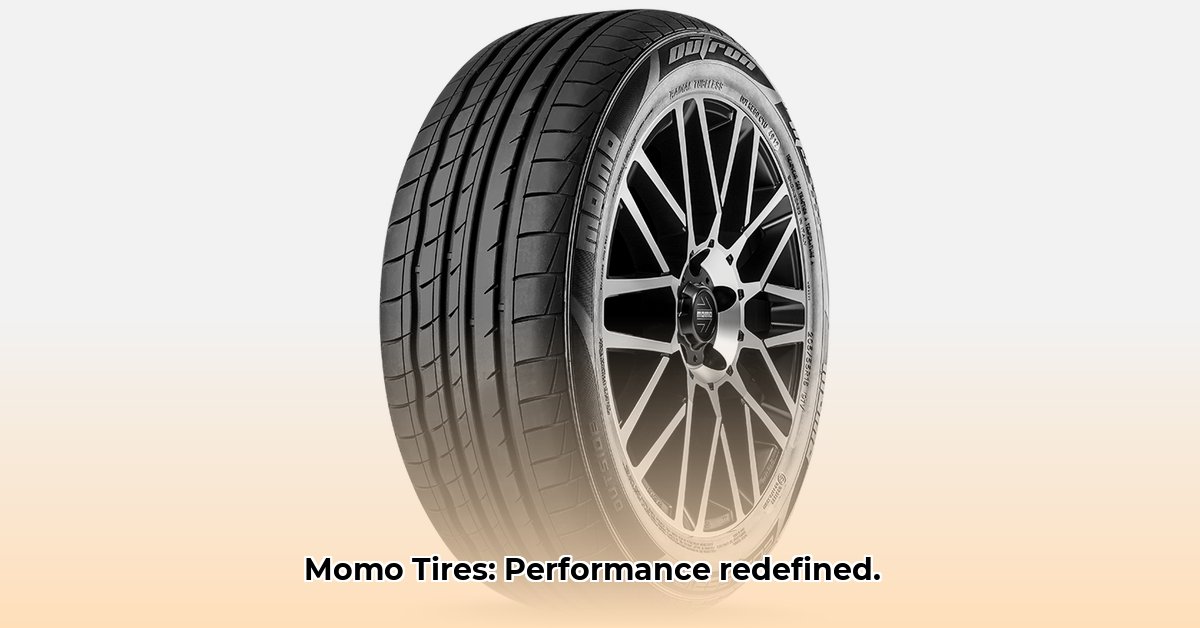
Momo tires: instantly recognizable for their stylish designs, but how do they perform? This in-depth review examines Momo's market positioning, strengths, weaknesses, and competitive landscape, addressing the central tension between aesthetic appeal and the lack of readily available performance data.
Design & Aesthetics: A Visual Feast
Momo's website showcases over 100 distinct passenger tire designs, emphasizing visual appeal through a wide variety of styles and patterns. The sheer variety is impressive, catering to diverse aesthetic preferences – some sleek and minimalist, others bold and eye-catching. This strong focus on design is a significant brand differentiator, appealing to consumers who prioritize visual impact. However, this emphasis raises a crucial question: Does style alone justify a purchase, especially in a market where performance often takes precedence?
Performance & Data Gap: The Knockdown
While Momo's aesthetic appeal is undeniable, a significant weakness lies in the limited availability of robust, independent performance data. Information on crucial aspects like wet grip, tread life, and noise levels is surprisingly scarce. This lack of transparency makes direct comparisons to competitors like Michelin, Pirelli, and Goodyear challenging. How can consumers make informed decisions without objective performance benchmarks? This data gap poses considerable brand risk and leaves the consumer feeling uncertain.
This lack of data creates several critical issues: * Difficulty in Comparison: Consumers struggle to compare Momo tires to well-established competitors who openly publish performance data. * Consumer Uncertainty: The absence of objective data fosters consumer uncertainty about tire quality, safety, and longevity. * Brand Risk: Momo's reliance on visual appeal, without substantial performance data to back it up, potentially limits its market reach and leaves it vulnerable.
Competitive Landscape: A Different Approach
Established tire manufacturers, such as Michelin, Pirelli, and Goodyear, heavily invest in performance testing and openly share the results. This fosters trust and allows for direct comparisons. Momo's emphasis on design, in contrast, positions it differently within the market. While visually striking, its lack of readily available performance data places it at a potential disadvantage in a sector frequently driven by objective performance metrics.
Market Positioning and Target Audience: Style Over Substance?
Momo's marketing appears targeted toward consumers who prioritize style and visual appeal. However, is this narrow focus sustainable in a market where most drivers consider performance and safety as paramount? While the stylish designs might attract a niche audience, a wider consumer base will likely demand more than just good looks. The risk here is potentially alienating the majority of buyers seeking concrete performance data before making a purchase.
Actionable Insights for Consumers: Due Diligence is Key
Before purchasing Momo tires, prospective buyers should take the following actions:
- Independent Research: Actively seek independent reviews and test results from reputable sources such as automotive publications (like Car and Driver or Consumer Reports) and online retailers.
- Data Limitations: Recognize that readily-available performance data for Momo tires is currently limited compared to many competitors.
- Prioritize Needs: Carefully weigh aesthetics against verifiable performance metrics. Understanding personal priorities is crucial when making an informed decision.
Conclusion: A Style-Conscious Gamble
Momo tires present a compelling visual proposition. Their designs are unique and visually striking. However, the significant deficiency in readily accessible performance data is a serious concern. Their future market success ultimately hinges on addressing this gap. Until objective performance data becomes readily available, Momo will likely appeal only to a niche market willing to prioritize style over demonstrable performance. Investment in independent testing and transparent reporting are crucial for broader market acceptance. A shift towards greater transparency in performance metrics will likely be vital for long-term growth and competition within the tire industry.